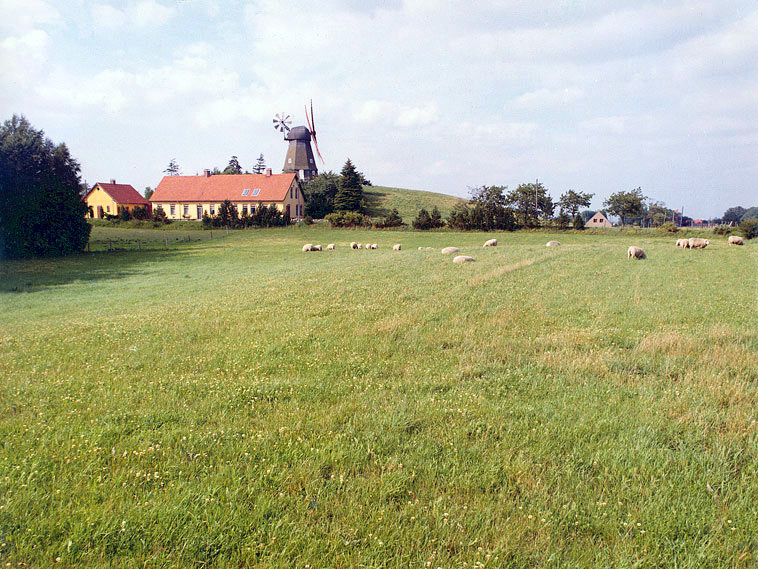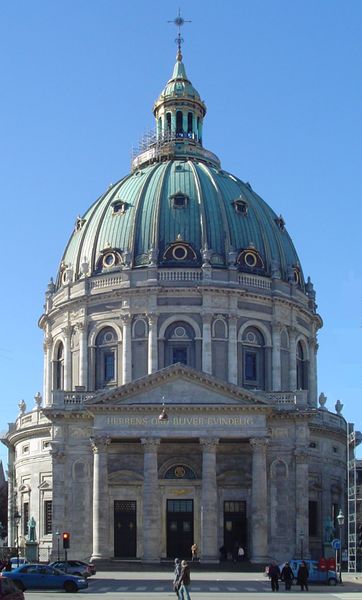Located in northern Europe, the country of Denmark is part of Scandinavia along with Norway and Sweden. It is the southernmost of these four countries, bordered to the south by Germany. The other three sides of the country are bordered by water- the North Sea and the Baltic. Sitting on the edge of the Central European climatic zone, Denmark has a temperate maritime climate.
Denmark is home to 5.4 million people governed by a constitutional monarchy. The capital city is Copenhagen. The official language in Denmark is Danish, although English and other Scandinavian languages are frequently heard within the country.
Passports & Visas
Passports are required to enter and leave Denmark. Visas are not required for US citizens for visits of less than 90 days. For longer visits, contact the nearest Danish embassy.
Obtaining a US passport
The US Government Website is where to start.
Visa information
Denmark Visa Information
American Offices
Provides consular assistance to U.S. citizens
US Embassy
Denmark Tourist Information
Culture and History
A Brief History of Denmark
Currency and Money
Denmark’s currency is the Danish Krone (DKK)
Driving in Denmark
Road conditions in Denmark are typically good. Danish law requires that seat-belts be worn at all times. You must drive with dimmed headlights at all times (day and night) and indicate before changing lanes on a motorway. Cyclists have the right of way, therefore it is important that you check cycle lanes before making a right turn. Danes drive on the right side of the road (like Americans).
Electricity in Denmark
Electrical outlets in Denmark use a two-prong plug similar to other countries in continental Europe. Make sure the adapter you buy is suitable, especially for Denmark (some countries’ outlets are deeper than European standard outlet.). Plug types C, F, or K, they have the correct size of round prongs (2). Electricity is delivered at 230 volts.
Emergency Numbers
The number 112 is used for all emergencies. Dialing 114 will connect you to the nearest police station.
Etiquette in Denmark
When meeting people:
Danes introduce themselves using their first names. It is expected that you greet everyone individually by shaking hands while smiling and maintaining direct eye contact. Always shake hands with women first. When leaving, say goodbye to everyone individually.
Going to someone’s home for dinner:
It is customary to bring a gift such as flowers (wrapped, preferably in red paper), chocolates or wine. Be sure to arrive on time, as this is a priority for most Danes. Remove your shoes when entering the house and offer to help the hostess with food preparation or cleaning up after the meal. When sitting down for dinner, wait to be told where to sit as there may be a seating plan.
Do not begin eating until the host toasts the table with the word “skol!” When toasting raise your glass and make eye contact with those seated close to you. Be sure to try everything that is offered to you and finish everything on your plate. Expect that second helpings will be offered, but you can politely refuse without offending your host and hostess. When you have finished eating, put your knife and fork across your plate with the fork tines facing up and the handles turned to the right.
Public Hours in Denmark
Business operating hours in Denmark vary depending on the type and location of an establishment (for example, businesses in larger cities may stay open longer than those in smaller towns).
Opening hours for businesses are usually between 9-10 am and many close between 5 and 7 pm. Banks and most government offices close for the weekend and public holidays. Most museums and shopping centers are open on weekends. Restaurants normally stay open until 10pm on weekdays and weekends.
Safety
There are no major health risks in Denmark. In terms of crime, Denmark is relatively safe though petty crimes occur from time to time in larger cities. Be careful of pickpockets and purse thieves.
Tipping in Denmark
In Denmark, tipping is not common because the tip is typically included in the price of the service. However, it is customary to “round up” on the bill, or leave up to 10% for the waiter if you have received exceptional service.
Weather in Denmark
Sitting on the edge of the Central European climatic zone, Denmark has a temperate maritime climate. As in North America, the summer season runs from June to August and winter lasts from December to March (mostly wet, with long periods of frost). Spring and autumn are mild.
Getting Around Denmark
Air Transportation
Most major international airlines fly to Copenhagen (Kastrup). Other airports well served by domestic airlines include Alborg, Arhus, Billund, Bornholm, Karup and Sønderborg. SAS (SK) is the domestic airline for Scandanavia.
Boats and Ferries
The main domestic ferry operator is Scandlines. The ferries to Bornholm Island are operated by Bornholmstrafikken.
Rail
The main cities on all islands are connected to the rail network: Alborg, Copenhagen, Esbjerg, Herning, Horsens, Odense and Randers are all connected via the rail network, Danish State Railways (DSB). Inter-rail passes are available at Available from Rail Europe.
Car Rental
All major international rental services are present in Denmark. Drivers must be at least 20 years old, some companies only rent to drivers over 25.
Taxis
Taxis are readily available in all major cities.
Health
Personal Medications
No permit is required to carry medication in your luggage. However, you should pack your medication in its original containers and/or have your doctor’s prescription with you. Customs officials will have to be satisfied that you are not importing more than would be necessary for your personal use, taking into account the drug type and length of stay (for no more than three months).
Lodging in Denmark
Denmark offers every type of lodging from couchsurfing, to hostels and agritourism , to 5-Star resorts.
Main Sights in Denmark
Popular sites in Copenhagen include the Royal Palace, The Little Mermaid Statue, and the Tivoli Gardens amusement park. For information on top tourist sites in Denmark, please see Visit Denmark.
Public Holidays in Denmark
2011
1 Jan New Year’s Day
21 Apr Maundy Thursday
22 Apr – 25 Apr Easter
20 May Common Prayer Day
2 Jun Ascension
5 Jun Constitution Day
25 Dec – 26 Dec Christmas
Telephones in Denmark
Dialing Procedures
To call Denmark from abroad, dial +45 + the 8-digit local number.
Most public telephones in Denmark are operated by means of telecards, but some will take Danish krones (DKK) and Euros. In these phones, the DKK coinage nominations of 1, 2, 5, 10 & 20DKK as well as the € coinage nominations € of 10c, 20c, 50c, 1€ & 2€ are accepted. Telecards in the nominations DKK 30, 50 & 100 can be purchased at railway stations, post offices, news stalls and gas stations.
Useful Country Codes:
USA and Canada 1
UK 44
Time Zone
Standard time zone: UTC/GMT +1 hour
Returning to the US
Customs,VAT & Duty Free
Value Added Tax (VAT or IVA) Refund Information
Danish prices include 25% VAT (Value Added Tax).
Danish VAT is refundable to persons who are non-EU residents and who are traveling to a non-EU destination. It can only be refunded in Denmark if Denmark is the last EU destination before you return to your home country/end destination.
For more information, see Denmark Shopping:
Duty Free
If you are a U.S. or Canadian resident, you may qualify for a personal exemption which allows you to bring goods of a certain value into the country without paying customs duties, excise taxes, or Value Added Tax.



